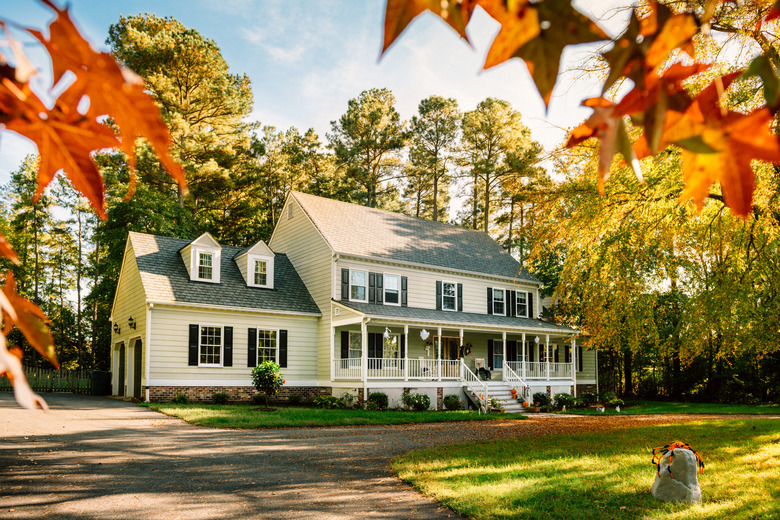Can I Plant Grass Seed In October?
We may receive a commission on purchases made from links.
There is no state or federal law that forbids planting grass seed in October, but will you end up with a thick, healthy lawn? The answer can be yes if you are planting cool-season grasses. While the optimal grass-planting time depends on where you live, it's entirely possible to plant in mid-October in many regions of the country.
Tip
Planting cool-season grasses in October can result in the growth of a lovely lawn in many locations.
Understand Cool-Season Grasses
Understand Cool-Season Grasses
Those just venturing into the wonderful world of lawn grasses must understand that it is divided into two hemispheres: warm-season grasses and cool-season grasses. Which is better? It depends entirely on where you live and what you want.
Cool-season grasses provide a green lawn in spring and fall while dying back or at least going dormant in hot summers. These are the dominant types of grasses in the Northern United States. These grasses include Kentucky bluegrass, fescues, and ryegrasses. They usually work well when mixed with one another.
Warm-season grasses love the heat. They are the grasses of preference in the South, offering a green lawn during the warm summers but dying back in autumn. This category of grasses includes Bermudagrass, buffalograss, and zoysiagrass. They require much less water than cool-season grasses.
Plant at the Right Time
Plant at the Right Time
If you are planting cool-season grass, late summer to early fall is the perfect time to get those seeds in the ground. That period starts around mid-August and runs through mid-October, although September is considered better for planting than October. This is the best time to put in a new lawn, to resow balding areas, and to overseed your current lawn. Regular irrigation is critical for new grass, and fall rains make this easier.
Anyone planting warm-season grass should understand that these types of grass, termed "tropical," grow best when the temperatures exceed 80 degrees Fahrenheit. That means they grow best in summers and should be planted in spring. Fall planting is not a good idea since warm-season grass dies back or goes dormant in cool weather.
Choose a Cool-Season Grass
Choose a Cool-Season Grass
The most common types of cool-season grasses include Kentucky bluegrass, perennial ryegrass, fine fescue, and tall fescue. Each has its own attractive features, and your choice should take these into account.
Tall fescue grasses are the most heat-tolerant of these lawn grasses. If you hope to keep your cool-season lawn alive into the summer, this is a good pick. On the other hand, Kentucky bluegrass is the most cold hardy. Consider this type of grass if your winter temperatures dip down pretty low. Fine fescues come in second when it comes to cold tolerance, while ryegrass is next in line.
Are you concerned about irrigation? Consider tall fescue, as this cool-season grass has the greatest drought tolerance of the common cool-season lawn grasses. It develops an extensive root system up to 3 feet deep. The roots of perennial ryegrass are less deep than those of fescue, while Kentucky bluegrass roots are even shallower.
